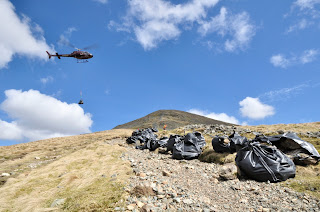Following feedback from my tutor and some rethinking about my images, here is my revised selection for Assignment Four:
 |
| Colour 1 |
Shot in the park in strong sunlight; the pink is effectively contrasted against the green with the sun light bringing out the full colour of the geode.
Colour 2
 |
| Colour 2 |
A mixed media shot, using a previously taken photograph as a background scene. The pink colours on the mountains from the setting sun support the colour of the back of the geode.
Form 1
 |
| Form 1 |
Shot overhead using side lighting from a table lamp to enhance the curved shape of the back of geode.
Texture 1
 |
| Texture 1 |
Shot using side lighting and black background paper, this image clearly emphasizes the texture of the back of the geode.
Texture 2
 |
| Texture 2 |
Taken in side-lighting from natural window light; this image emphasizes the shiny surface of the flat plane of the geode, helped by the reflections of the lighting that fell on the paper.
Texture 3
 |
| Texture 3 |
Macro shot of the interior of the geode showing the inner crystalline texture; this was achieved using a macro lens and shining a table lamp and a little LED head lamp right into the centre, to bring out the crystals all the way into the back.
Shape 1
 |
| Shape 1 |
Taken using side-lighting from a table lamp, which has picked out the shape of the flat plane of the geode with the side shadow further supporting the concept of shape.
Shape 2
 |
| Shape 2 |
The second shape shot was taken by trying to catch strong rays of natural light coming in through a bedroom window. This shot was underexposed by four stops and used a very narrow aperture so that only the shape of the tip of the geode was picked out.






















